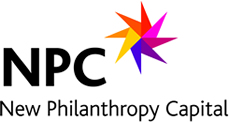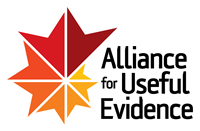How do we classify our outcomes and impact indicators?
by Gina Mankin, Estonian Social Enterprise Network
Classifications are boring.
That’s what I thought when I started my impact measurement project with the Estonian Social Enterprise Network 6 months ago. And then I found out that the right classification can save A LOT of time. Time I can spend with my family and friends or on getting more work done. Now, I love finding better classifications.
That’s why I would like to start a discussion with you that would help us all classify our outcomes/ impact indicators better. I’ll start by sharing “the Estonian” experience.
In the framework of our impact measurement project, we recently put together a list of possible outcomes/ impact indicators for Estonian social enterprises. As we thought about possible ways to categorize these indicators, our first thought was “Let’s sort them by sector”. Several international experts recommended the International Classification of Non Profit Organizations (ICNPO) as a basis for this sector-based classification. When we tried applying the ICNPO in the Estonian context a couple of problems occurred.
The category “development and housing”, which includes “community and neighborhood organizations, economic development, social development, housing associations and assistance, job training programs, vocational counselling and guidance, vocational rehabilitation and sheltered workshops”, makes little sense for the Estonian social entrepreneurship scene. The term “development” as well as subcategories such as “social development” are simply too abstract. Also, it would make sense to remove the subcategories “job training program” and “vocational counselling and rehabilitation” to form an independent category for creating or keeping jobs, because a big share of social enterprises in Estonia provide disadvantaged population groups with job training and employment. Some examples are Abikäsi, Merimetsa Tugikeskus, Aktiviseerimis-keskus Tulevik, Töötahe and Eesti Pimemassööride Ühing.
The “levels of impact” classification (individual, family, organization, community, society) by Ellis and colleagues turned out to be way more useful:
However, working with the Estonian social enterprises has taught us that it makes more sense to leave out the “society” level. First, social enterprises are then more likely to formulate more specific and realistic impact indicators on the individual, family, community and organizational level. Secondly, most impact on the society level can also be measured on the individual or community level. For example, if the government decides to increase the amount of financial assistance paid to students, then the impact of the decision can be measured on an individual and family level.
Another classification turned out to be very useful for our list of outcomes/ impact indicators was the “change in…” classification, also by Ellis and colleagues (examples added by us).
For us, it made sense to split up the “wellbeing” category into “physical well-being” and “mental well-being” and to rename “attitudes and feelings” into “attitudes”, since “feelings” fit better into “mental well-being”.
That’s how far we’ve come. Now, let’s find better classifications for all of us. How do you think we should classify our outcomes/ impact indicators? Join the discussion by commenting on this blog post, via Facebook or contact us directly, we would love your feedback on the project results and how we could develop them. Also, if you’d like to develop something bigger in the framework of an international project, we’d be interested in your ideas!
About the author:
Gina Mankin was project manager for the Estonian Social Enterprise Network’s most recent the impact measurement project. For her, the most interesting challenge was to let go of some scientific expectations that simply weren’t feasible for small social enterprises with very limited (human/ financial) resources. Together with the social enterprises and Jaan Aps, she found creative alternatives of illustrating social change that don’t require that many resources. Jaan Aps leads the Estonian Social Enterprise Network and is CEO of a social business called Stories For Impact, which provides solutions for identifying, evaluating and communicating societal impact.
About the research:
Typically for many social-purpose organizations, Estonian social enterprises tend to be limited by a lack of human and financial resources. Most available impact measurement techniques are not designed for smaller organizations with two to six employees and would overburden Estonian social enterprises for relatively little gain. Moreover, they struggle with the selection of impact or outcome indicators.
From September 2013 to February 2014, the Estonian Social Enterprise Network carried out an impact measurement project to help Estonian social enterprises overcome these obstacles by providing them with a list of possible outcome and impact measurement indicators as well as a manual including “tips and tricks” for outcome and impact measurement.
Among other things, the list of indicators and the collection of “tips and tricks” for outcome and impact measurement are based on a small-scale top-down and bottom-up study. The aim of these studies was to reveal, which outcomes/impact indicators investors currently expect from social enterprises, indicators investors use internally, indicators social enterprises and NGOs use themselves to illustrate their impact. To find out more about this project and its results, click here.





